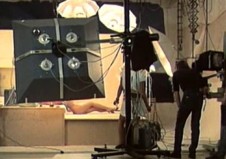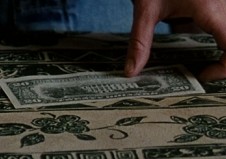Wie man sieht (As You See) – In memory of filmmaker Harun Farocki

Stilleben (Still Life)
The Goethe-Institut Los Angeles and Los Angeles Filmforum present
Wie man sieht (As You See) –
In memory of filmmaker Harun Farocki
Wednesday February 4, 2015, 7:00 pm
Screening 4: An Image and Still Life
Film Series
Wednesdays, January 14th through March 4th 2015
Goethe-Institut Los Angeles, 5750 Wilshire Blvd. Suite 100, Los Angeles, CA 90036
German with English subtitles
Free admission, but RSVP needed, by email to rsvp@losangeles.goethe.org or the 323.525.3388
Harun Farocki – the director whose perspicacious cinematic essays analyzed the new media world – died in July 2014. With his radical way of looking at things Farocki strove to endow images with their own form of self-will, to expose their political and cultural coding.
Farocki lived and worked in Berlin as a filmmaker, artist and writer. His essay and observational films question the production and perception of images, decoding film as a medium and examining how audiovisual culture is related to history, politics, technology and war.
His projects have been shown in festivals and solo, group and retrospective exhibitions worldwide at important events and international institutions, including the 2010 São Paulo Biennial, Documenta X and XXII in Kassel, Tate Modern in London, MACBA in Barcelona, Museum Ludwig in Cologne and the Jeu de Paume in Paris.
All films in this series are in German with English Subtitles, unless otherwise noted.
For more event information: info@losangeles.goethe.org, or +1 323 5253388
Tickets: Free, but please RSVP due to limited seating, by email to rsvp@losangeles.goethe.org or the 323.525.3388
$1 validated parking (for events only) on weekdays after 6:00 pm and all day on weekends in the Wilshire Courtyard West underground garage-P1.
Special Thanks to Daniel Chaffey of the Goethe-Institut Los Angeles and Lucas Quigley for organizing this series.

Ein Bild (An Image)
Ein Bild (An Image)
1983, 25 min., color, German with English subtitles, Digital.
Four days spent in a studio working on a centerfold photo for Playboy magazine provided the subject matter for my film. The magazine itself deals with culture, cars, a certain lifestyle. Maybe all those trappings are only there to cover up the naked woman. Maybe it's like with a paper-doll. The naked woman in the middle is a sun around which a system revolves: of culture, of business, of living! (It's impossible to either look or film into the sun.) One can well imagine that the people creating such a picture, the gravity of which is supposed to hold all that, perform their task with as much care, seriousness, a responsibility as if they were splitting uranium. This film, An Image, is part of a series I've been working on since 1979. The television station that commissioned it assumes in these cases that I'm making a film that is critical of its subject matter, and the owner or manager of the thing that's being filmed assumes that my film is an advertisement for them. I try to do neither. Nor do I want to do something in between, but beyond both. (Harun Farocki, Zelluloid, no. 27, Fall 1988)

Stilleben (Still Life)
Stilleben (Still Life)
1997, 58 min., color and b/w, German with English subtitles. Digital.
According to Harun Farocki, today's photographers working in advertising are, in a way, continuing the tradition of 17th century Flemish painters in that they depict objects from everyday life - the "still life". The filmmaker illustrates this intriguing hypothesis with three documentary sequences which show the photographers at work creating a contemporary "still life": a cheese-board, beer glasses and an expensive watch.
